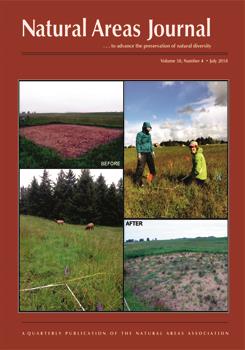Wildfires on public lands in the United States are increasing in size and frequency over time. Government agency post-fire treatments often include seeding of native and nonnative plant species; however, the effectiveness of post-fire seeding has been questioned, and while the importance of using native species has been emphasized, more research on the effects of native seeding post-fire is needed. We sought to understand what characteristics of vegetation communities distinguished burned and unburned areas, and if environmental characteristics of sites would predictably alter community composition. We collected vegetation, ground cover, and environmental data during the summer of 2015 from public lands that burned in wildfires between 2005 and 2012 and were seeded with a native seed mix. We also collected data from unburned comparison areas that were not seeded. We found that biological soil crusts distinguished unburned areas while native forbs, nonnative forbs, and seeded native species distinguished burned areas. Surprisingly, Bromus tectorum (cheatgrass) was not important in distinguishing burned from unburned areas. Precipitation the year after fire influenced vegetation communities.
How to translate text using browser tools
1 July 2018
Post-Fire Native Seed Use in Western Colorado: A Look at Burned and Unburned Vegetation Communities
Madeline N. Grant-Hoffman,
Anna Lincoln,
James Dollerschell
ACCESS THE FULL ARTICLE

Natural Areas Journal
Vol. 38 • No. 4
July 2018
Vol. 38 • No. 4
July 2018
cheatgrass
disturbance
invasive plants
public lands
Seeding
wildfire




